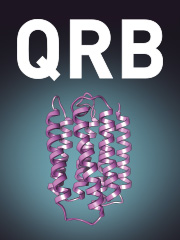Crossref Citations
This article has been cited by the following publications. This list is generated based on data provided by
Crossref.
Grigorieff, N
and
Henderson, R
1995.
Diffuse scattering in electron diffraction data from protein crystals.
Ultramicroscopy,
Vol. 60,
Issue. 2,
p.
295.
Case, David A.
1997.
Computer Simulation of Biomolecular Systems.
p.
284.
Wall, Michael E
Clarage, James B
and
Phillips, George N
1997.
Motions of calmodulin characterized using both Bragg and diffuse X-ray scattering.
Structure,
Vol. 5,
Issue. 12,
p.
1599.
Héry, Stéphanie
Genest, Daniel
and
Smith, Jeremy C.
1998.
X-ray diffuse scattering and rigid-body motion in crystalline lysozyme probed by molecular dynamics simulation 1 1Edited by R. Huber.
Journal of Molecular Biology,
Vol. 279,
Issue. 1,
p.
303.
Case, David A.
2002.
Rigidity Theory and Applications.
p.
329.
Matyi, Richard J.
Long, Gabrielle G.
and
Volz, Heather M.
2002.
From Semiconductors to Proteins: Beyond the Average Structure.
p.
257.
Tiede, David M.
Zhang, Ruitian
and
Seifert, Soenke
2002.
Protein Conformations Explored by Difference High-Angle Solution X-ray Scattering: Oxidation State and Temperature Dependent Changes in Cytochrome C.
Biochemistry,
Vol. 41,
Issue. 21,
p.
6605.
Walser, Regula
Hünenberger, Philippe H.
and
van Gunsteren, Wilfred F.
2002.
Molecular dynamics simulations of a double unit cell in a protein crystal: Volume relaxation at constant pressure and correlation of motions between the two unit cells.
Proteins: Structure, Function, and Bioinformatics,
Vol. 48,
Issue. 2,
p.
327.
Moss, D.S.
Harris, G.W.
Wostrack, A.
and
Sansom, C.
2003.
Diffuse X-Ray scattering from molecular crystals.
Crystallography Reviews,
Vol. 9,
Issue. 4,
p.
229.
Meinhold, Lars
and
Smith, Jeremy C.
2005.
Correlated Dynamics Determining X-Ray Diffuse Scattering from a Crystalline Protein Revealed by Molecular Dynamics Simulation.
Physical Review Letters,
Vol. 95,
Issue. 21,
Meinhold, Lars
and
Smith, Jeremy C.
2005.
Fluctuations and Correlations in Crystalline Protein Dynamics: A Simulation Analysis of Staphylococcal Nuclease.
Biophysical Journal,
Vol. 88,
Issue. 4,
p.
2554.
Meinhold, Lars
and
Smith, Jeremy C.
2007.
Protein dynamics from X‐ray crystallography: Anisotropic, global motion in diffuse scattering patterns.
Proteins: Structure, Function, and Bioinformatics,
Vol. 66,
Issue. 4,
p.
941.
Riccardi, Demian
Cui, Qiang
and
Phillips, George N.
2009.
Application of Elastic Network Models to Proteins in the Crystalline State.
Biophysical Journal,
Vol. 96,
Issue. 2,
p.
464.
Moore, Peter B.
2009.
On the Relationship between Diffraction Patterns and Motions in Macromolecular Crystals.
Structure,
Vol. 17,
Issue. 10,
p.
1307.
Polikanov, Yury S.
and
Moore, Peter B.
2015.
Acoustic vibrations contribute to the diffuse scatter produced by ribosome crystals.
Acta Crystallographica Section D Biological Crystallography,
Vol. 71,
Issue. 10,
p.
2021.
Meisburger, Steve P.
Thomas, William C.
Watkins, Maxwell B.
and
Ando, Nozomi
2017.
X-ray Scattering Studies of Protein Structural Dynamics.
Chemical Reviews,
Vol. 117,
Issue. 12,
p.
7615.
Peck, Ariana
Poitevin, Frédéric
and
Lane, Thomas J.
2018.
Intermolecular correlations are necessary to explain diffuse scattering from protein crystals.
IUCrJ,
Vol. 5,
Issue. 2,
p.
211.
Cerutti, David S.
and
Case, David A.
2019.
Molecular dynamics simulations of macromolecular crystals.
WIREs Computational Molecular Science,
Vol. 9,
Issue. 4,
2023.
Crystallography of Protein Dynamics.
Vol. 688,
Issue. ,
p.
115.

